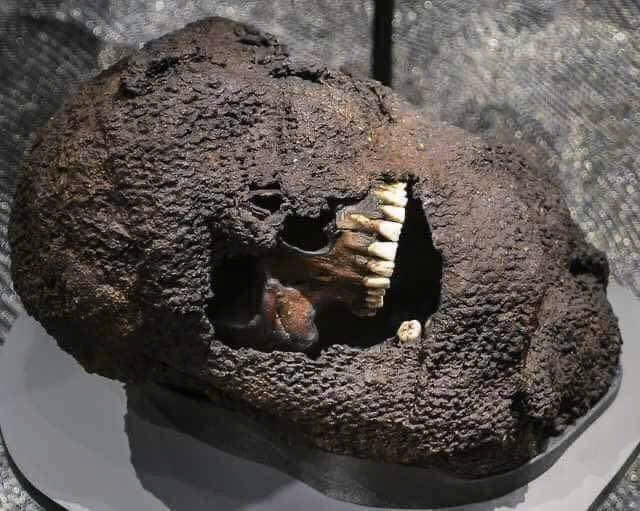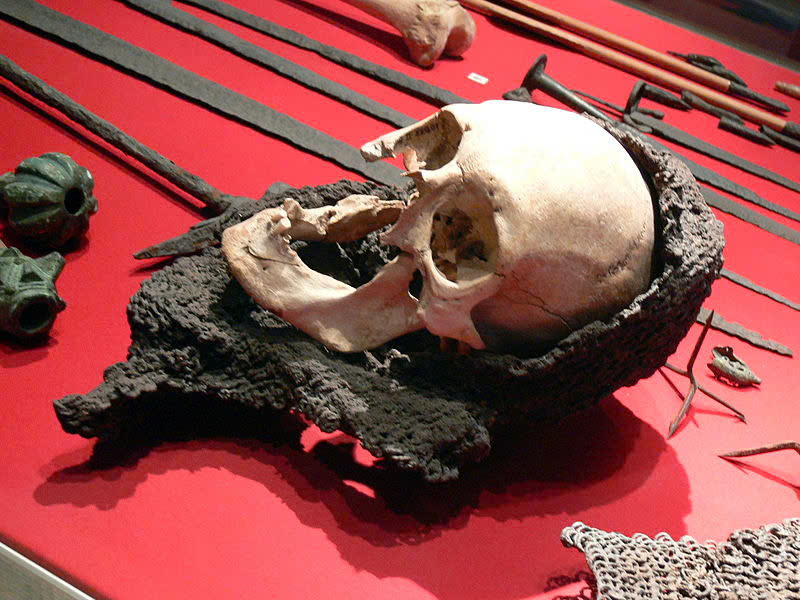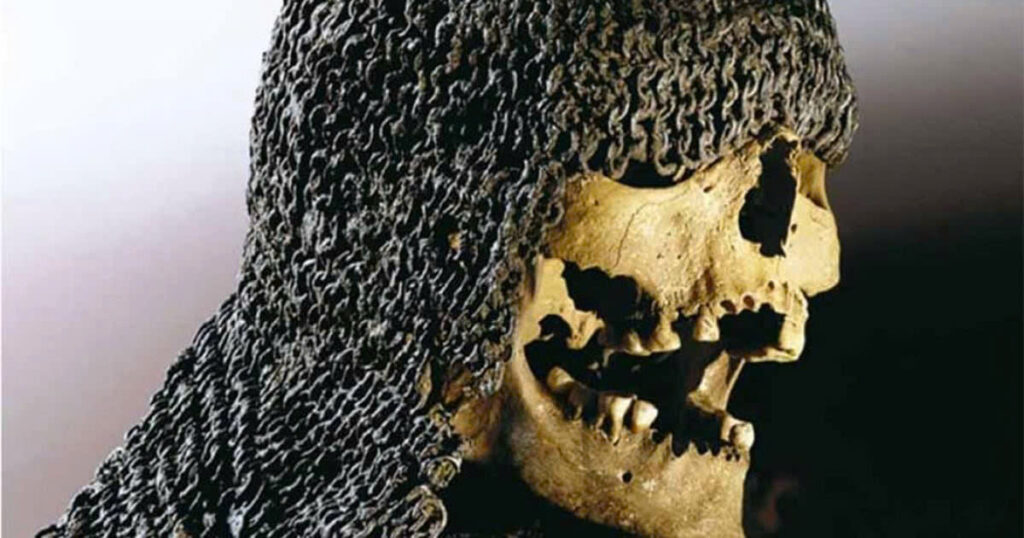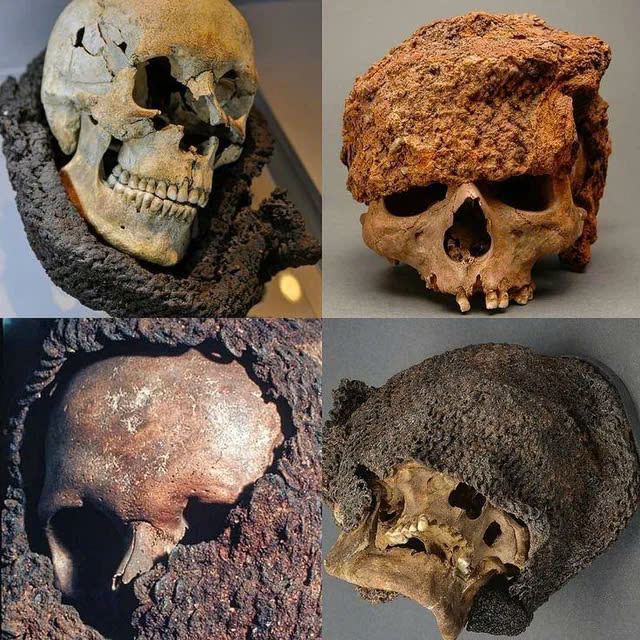Unearthing a Medieval Mystery
Few archaeological discoveries capture the tragedy and valor of medieval warfare quite like the skull of a fallen warrior, still encased in the chainmail that once protected him. Unearthed from the mass graves outside Visby, on the island of Gotland, Sweden, this haunting relic brings the brutal summer of 1361 vividly back to life — a moment when courage met catastrophe on the blood-soaked fields of history.
The Stage is Set: Gotland, 1361

The island of Gotland, jewel of the Baltic Sea, had long been a center of trade and independence under the Hanseatic League. But in July 1361, its peace shattered. King Valdemar Atterdag of Denmark, determined to reassert dominance over the Baltic routes, sent his armies across the water. As his warships darkened the horizon, the people of Gotland — farmers, merchants, and townsfolk — rallied to defend their homeland.
They were ill-prepared. The Danish troops were hardened, professional soldiers — veterans of campaigns across Europe. The Gotlanders, by contrast, were mostly local militia, armed with a mix of spears, axes, and what armor they could muster. Yet they stood their ground on the plains outside Visby, beneath the summer sun, ready to fight for their freedom.
The Battle Unfolds

The clash that followed was swift and merciless. As Danish knights advanced behind walls of shields and banners, the defenders of Gotland held fast. Steel rang against steel, arrows hissed through the air, and the earth shook beneath the thunder of armored hooves.
In the midst of the chaos fought one nameless warrior — his mail shirt glinting with each desperate swing of his weapon. But against the disciplined ranks of Valdemar’s army, the resistance faltered. When the final blow came, it was sudden and fatal — a strike that shattered bone and drove iron into flesh. His chainmail fused to his skull, his courage sealed forever in metal and bone.
A Grim Discovery

Nearly six centuries later, in 1905, archaeologists excavating the fields outside Visby uncovered the mass graves of more than 1,100 fallen men. Among them lay the skull of the warrior — still entwined with his chainmail coif, the rings rusted yet intact. It was a scene frozen in time: men buried with their armor, weapons, and sometimes coins still in their purses, silent witnesses to a battle that had reshape d Northern Europe.
d Northern Europe.
The preservation of these remains was extraordinary. The dry Gotland soil had kept their armor, bones, and even fragments of clothing intact, providing scholars with one of the best-documented medieval battlefields ever found. The fused skull and mail, in particular, offered a visceral glimpse of medieval warfare’s reality — personal, brutal, and final.
Echoes Through Time

The Battle of Visby marked a turning point. Gotland fell under Danish control, and the Hanseatic League’s dominance began to wane. Yet in death, the defenders left behind a legacy that would outlast empires. Their graves revealed not just the brutality of combat, but also the humanity of those who fought — ordinary men who faced impossible odds with extraordinary resolve.
For historians and archaeologists, the fused skull and mail tell a story written not in chronicles, but in iron and bone. It is a story of courage met with tragedy, of a world where loyalty and valor stood against the relentless march of conquest.
Reflections on Valor and Memory

Today, the remains of the fallen from Visby rest in the Gotland Museum, preserved as a somber tribute to a defining moment in Scandinavian history. Their silent faces, encased in armor, remind us of the fragility of human life — and the endurance of memory.
In that warrior’s chainmail, we see not just a relic of war, but a testament to enduring courage. His story, etched forever in rusted rings, bridges the centuries between us — whispering that even in defeat, bravery leaves a mark that time can never erase.
Sources
- Swedish National Heritage Board – The Battle of Visby Excavations
- Gotland Museum – Medieval Collections and the Visby Graves
- BBC History – Medieval Warfare and the Baltic Campaigns
- National Geographic – Unearthing the Battle of Visby
- Smithsonian Magazine – Lessons from Medieval Battlefields
